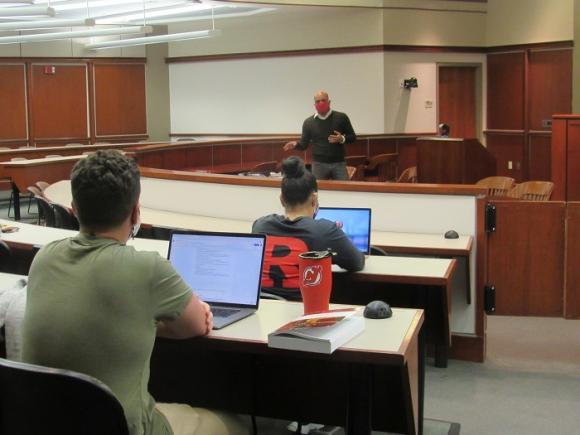Why Your Next Case Requirements a Strong Trial Presentation: Insights and Techniques for Legal representatives
Why Your Next Case Requirements a Strong Trial Presentation: Insights and Techniques for Legal representatives
Blog Article
How to Produce Engaging Trial Presentations That Sway Juries and Judges
Crafting compelling test presentations that captivate courts and courts is a nuanced art that needs a tactical approach. By using ingenious visual devices, integrating interactive elements, and committing time to extensive practice and practice session, legal professionals can dramatically improve the impact of their court room presentations.
Recognizing Your Audience
To effectively involve your audience throughout test presentations, it is essential to recognize their preferences, assumptions, and level of experience in the subject. By tailoring your presentation to satisfy the specific requirements of the target market, you can improve their understanding and retention of the details provided.
Begin by looking into the demographics of the audience, such as age, education and learning degree, and profession. This details can help you assess their familiarity with legal treatments and adjust your presentation design as necessary. A court might require easier language and even more aesthetic aids compared to a team of lawful specialists.
Furthermore, think about the mental and psychological facets of your target market. Are they understanding towards specific debates or even more inclined towards facts and evidence? Comprehending these subtleties can aid you mount your discussion in a way that resonates with the audience on a deeper level.
Storytelling Methods
Comprehending your target market's choices and assumptions can substantially affect the performance of your test discussions, specifically when applying narration strategies to encourage and astound. Narration is an effective tool that can assist attorneys get in touch with judges and juries on a more psychological degree, making intricate lawful disagreements much more relatable and unforgettable.

Including brilliant information, personal anecdotes, and ornate tools can additionally improve the storytelling experience, maintaining the target market engaged and invested in the outcome of the case. By crafting an influential tale that reverberates with the values and feelings of the court and judges, lawyers can raise the opportunities of winning their disagreements and achieving desirable judgments.
Visual Discussion Devices
Utilizing aesthetic presentation tools can substantially improve the impact and performance of trial presentations by supplying a visually interesting method to convey intricate info to courts and judges. Aesthetic aids such as graphes, graphs, diagrams, and computer animations can help streamline intricate details, making them extra easily accessible and understandable to the audience. By including visual aspects right into trial presentations, legal representatives can create an engaging story that reverberates with jurors and leaves a long lasting impact.

Incorporating Interactive Aspects
Including interactive elements into test discussions can enhance audience interaction and understanding, fostering a much more immersive and interactive court room experience. By integrating aspects such as interactive timelines, 3D computer animations, clickable displays, and digital reality restorations, lawyers can astound jurors and judges, making complicated info a lot more accessible and memorable.
Interactive timelines permit a vibrant display screen of sequential occasions, helping the audience grasp the sequence of key occurrences in a situation. 3D animations can bring criminal offense scenes or mishap restorations to life, using an in-depth graph that helps in clarifying complex information. Clickable exhibitions allow individuals to communicate with evidence, documents, or images, permitting a hands-on expedition of important information.
Moreover, digital fact restorations can carry the audience into the heart of the activity, giving an engaging point of view that conventional presentations might do not have. These interactive elements not only involve the customers but also encourage them to proactively take part in the trial process, causing a more impactful and persuasive court presentation.
Practice and Rehearsal
To effectively leverage the possibility of interactive aspects in trial presentations, thorough technique and practice session are necessary to guarantee seamless assimilation and shipment in the court setup. Technique and wedding rehearsal help test presenters come like it to be acquainted with the content, timing, and circulation of their discussions, allowing them to with confidence navigate via various elements such as video clips, animations, or interactive graphics. By practicing their shipment, speakers can fine-tune their speaking abilities, body language, and general presentation design to enhance persuasion and credibility prior to the court and judge.
Throughout method sessions, speakers can determine any kind of technical concerns that may emerge with interactive aspects, ensuring that whatever runs efficiently during the real trial. Furthermore, practicing in front of a simulated target market or associates can give important responses on the effectiveness of the interactive elements and the total presentation. This feedback enables speakers to make necessary changes and improvements before entering the courtroom, inevitably increasing the effect and success of their test discussions.
Conclusion
To conclude, developing engaging trial read this discussions that astound courts and judges calls for a deep understanding of the target market, effective storytelling methods, aesthetic devices, interactive components, and comprehensive method (Trial Presentations). By applying these strategies, attorneys can successfully share their debates and evidence in a compelling manner that resonates with the decision-makers in the courtroom
Using visual presentation tools can considerably improve the influence and performance of test discussions by giving an aesthetically interesting means to share intricate information to courts and courts. By incorporating aesthetic find out here now aspects into trial presentations, lawyers can create an engaging story that reverberates with jurors and leaves an enduring perception.
One prominent visual presentation tool is the usage of multimedia discussions, which enable for the combination of videos, photographs, and audio recordings to supplement spoken debates. Trial Presentations.To properly take advantage of the capacity of interactive elements in trial discussions, detailed method and wedding rehearsal are vital to guarantee seamless integration and distribution in the court setting. Technique and wedding rehearsal assistance test speakers become acquainted with the web content, timing, and flow of their discussions, enabling them to confidently browse with different components such as videos, computer animations, or interactive graphics
Report this page